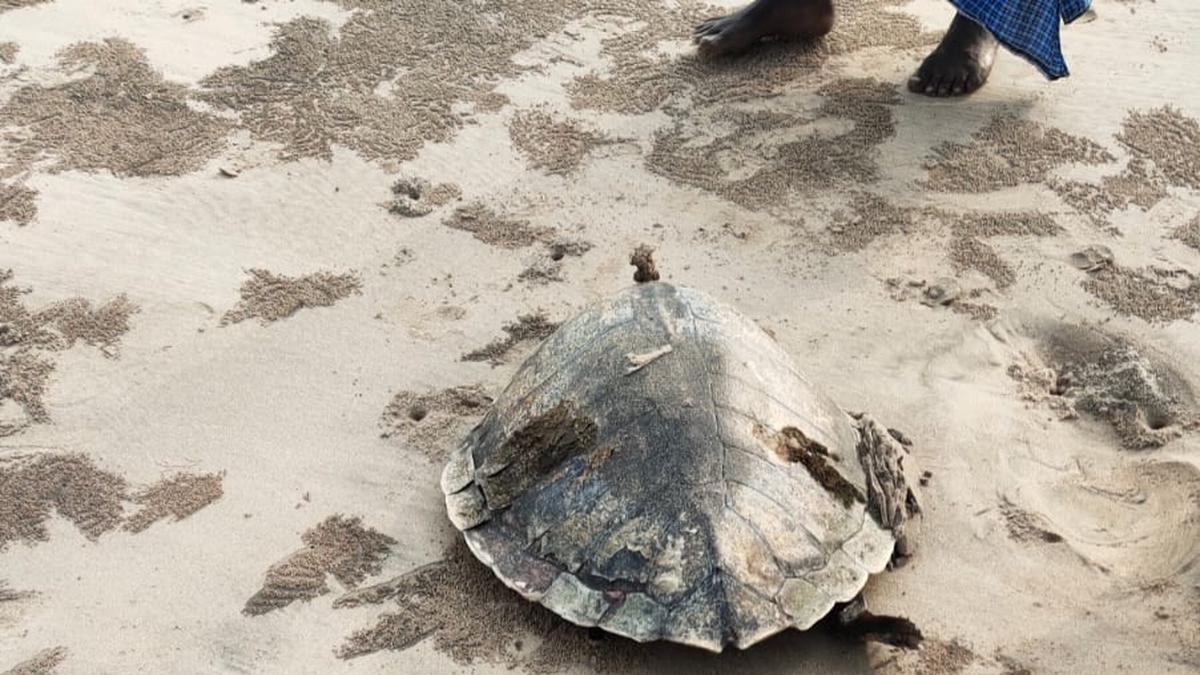News Highlight
Carcasses of Olive Ridley turtles on Andhra Pradesh shores worry tourists.
Key Takeaway
- Carcasses of endangered Olive Ridley turtles were found washed ashore on the shores of various Krishna district islands.
- Visitors visiting the beaches voiced concern over the Olive Ridley turtles’ extinction.
- Furthermore, injuries were found on some of the carcasses of turtles.
Olive Ridley Turtles
- About
- Olive ridley turtles are the smallest and most abundant sea turtles on the planet.
- These carnivorous turtles derive their name from their olive-coloured carapace.
- They are most recognised for their remarkable mass nesting behaviour known as Arribada.
- In addition, thousands of females congregate on the same beach to lay eggs.
- Habitat
- They can be found in the Pacific, Atlantic, and Indian oceans.
- Furthermore, the Gahirmatha Marine Sanctuary in Odisha is home to the world’s largest sea turtle rookery.
- Protection Status
- Wildlife Protection Act, 1972: Schedule 1
- IUCN Red List: Vulnerable
- CITES: Appendix I
Threats on Olive Ridley Turtles
- Human Consumption
- They are poached extensively for their meat, shell, leather, and eggs.
- Marine Pollution and Waste
- Plastics, fishing nets, discarded nets, polythene, and other rubbish dumped by tourists are rising.
- Furthermore, fishing workers endanger all sea turtles and destroy their ecosystems.
- Fishing Trawlers
- Firstly, overexploitation of marine resources by trawlers frequently breaches the regulation not to fish within 20 kilometres of a marine sanctuary.
- Many of the dead turtles had damage marks that indicated they had been caught in trawls or gill nets.
Mass mortality of Olive Ridleys
- Recently, turtle mortality has been widespread in the nesting grounds between Kakinada and Antarvedi.
- This is primarily due to effluent discharged from aqua ponds along the coast.
- As well as, emissions from pipes at onshore oil drilling sites.
- A complaint was also made with the National Green Tribunal (NGT) over the marine and groundwater pollution in the Konaseema region.
Initiatives to Protect Olive Ridley Turtle
- Operation Olivia
- The Indian Coast Guard oversees Operative Olivia.
- It began safeguarding Olive Ridley Turtles that come to the Odisha coast to nest and breed.
- “Operation Olivia” is carried out every year from November through December.
- Turtle Excluder Devices (TEDs)
- These are 2-D net inserts with large escape openings for turtles.
- In addition, to avoid accidental death in India, the Odisha government has made it essential for trawls to utilise TEDs.
- TEDs are nets with an exit cover that allow turtles to escape while keeping the capture.
- Tagging
- The rare Olive Ridley turtles are tagged with non-corrosive metal tags to allow scientists to track their movements.
- As well as learn about the regions they visit to safeguard the species and their ecosystems.
- Setting up of rookeries
- Ex-situ conservation is used to ensure safe breeding and egg collection.
Marine Turtles
- Indian coastal seas and islands are home to five different species of sea turtles.
- Olive Ridley turtle
- Green turtle
- Hawksbill turtle
- Loggerhead turtle
- Leatherback turtle
- Except for the Loggerhead, the remaining four species nest along the Indian coast.
Gahirmatha Marine Sanctuary
- Odisha’s Gahirmatha Marine Sanctuary is a marine animal sanctuary.
- It stretches from the mouth of the Dhamra River in the north to the mouth of the Mahanadi River in the south.
- Additionally, it is well-known for being a nesting beach for olive ridley sea turtles.
- It is one of the world’s most important turtle-nesting beaches.
- Every year, millions of olive ridley turtles congregate along the Odisha coast to nest, this phenomenon is known as arribada.
- Apart from Gahirmatha, these aquatic mammals congregate in the Rushikulya and Devi river mouths for mass nesting.
- Furthermore, the Rushikulya river mouth is India’s second-largest nesting place for Olive Ridley Turtles.

Pic Courtesy: The Hindu
Content Source: The Hindu



